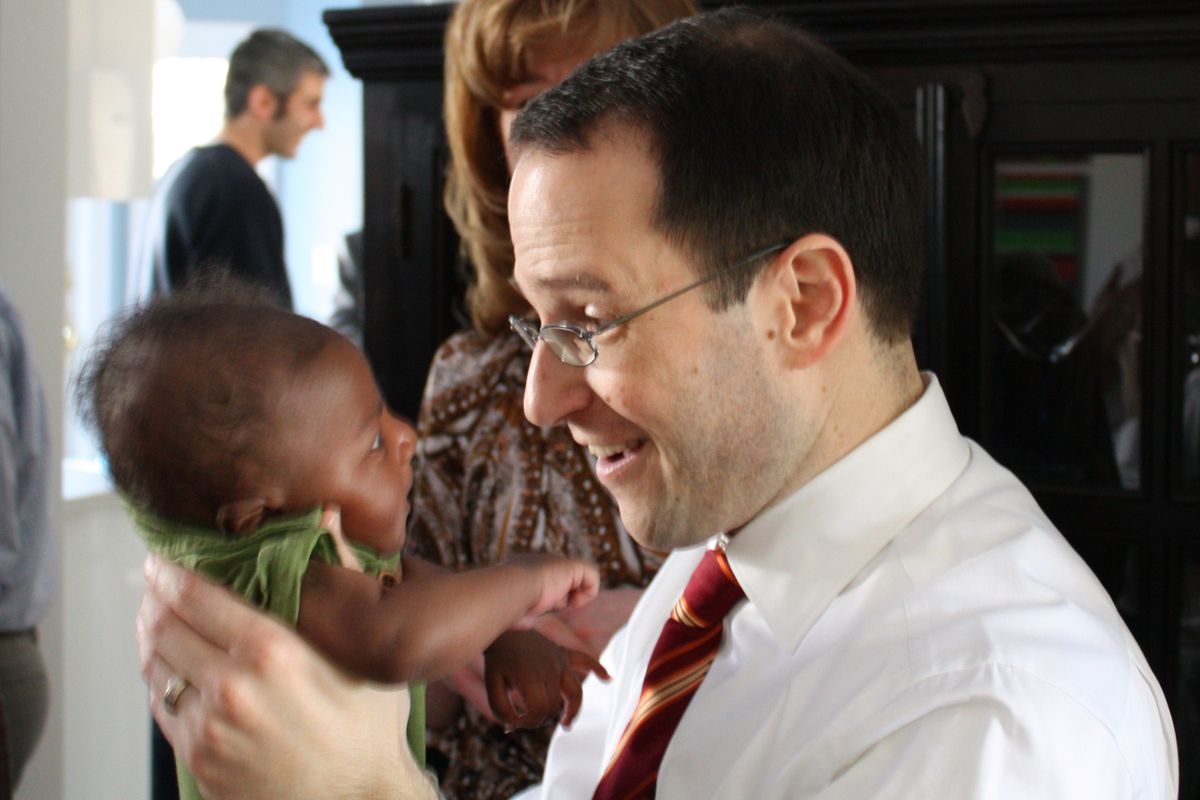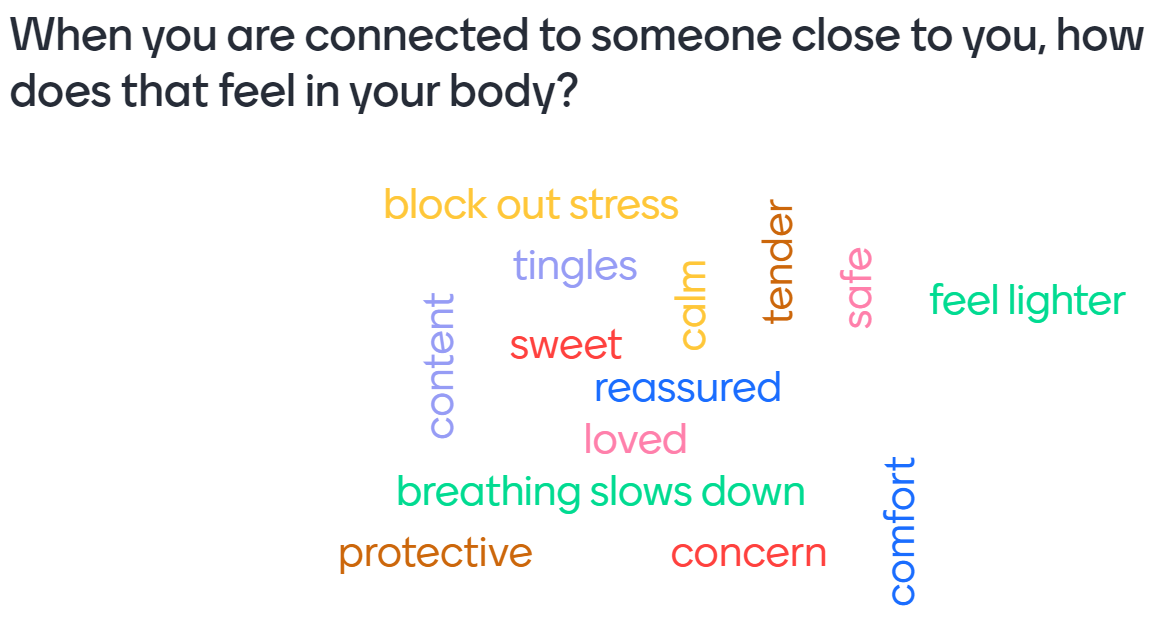👋 Welcome to Starting Early. Every other week, we spotlight new reports, useful news, engaging interviews with people doing important work in the field, and interesting takes on issues that matter.
For this issue, we’re pleased to welcome our first guest editor, Ira Hillman, who curated the fantastic Early Relational Health content in this issue. Ira works at Einhorn Collaborative, where he leads their Bonding strategy. He is a powerful voice in the philanthropic sector for helping parents and their babies establish and maintain emotional connection from birth. At Einhorn, Ira championed the creation of Pediatrics Supporting Parents, a unique funder collaborative that leverages pediatric well-visits to support children’s social and emotional development and nurturing parent-child relationships.
- Early Relational Health (ERH) refers to the foundational relationships between young children and their caregivers that advance physical health and development, social well-being, and resilience.
Einhorn Collaborative’s mission is to curb the “crisis of connection.” As humans, we’re inherently relational and social — yet troubling trends like rising loneliness and social isolation have disrupted our ability to connect with one another.
On November 3, Ira convened an inspiring meeting of 26 funders for the first-ever Early Relational Health Funder Summit in partnership with the Center for the Study of Social Policy.
The Burke Foundation was honored to participate in the Summit, and we’re investing in a new Early Relational Health field scan to explore how the quality of relationships between babies and their caregivers can promote lifelong health benefits and improve overall well-being of children and adults. Conducted by Harvard University’s Dr. Junlei Li and Thelma Ramirez, the work should help supportive, loving caregivers buffer the effects of toxic stress and adversity.
Read on and click the links to go deeper.
1. Why early connections matter, by Ira Hillman

Our lives are often split into “before and after”: before COVID and after; before parenthood and after. For me — and many others, including those profiled below — life is split between before the lens of autonomic emotional connection was revealed to us and after. A lightbulb went off for me when I learned that our emotional connection to others can be experienced within our bodies through our stress physiology. In other words, the mere sight, sound, or touch of someone we love can help regulate our stress response and mutually calm ourselves and our loved ones.
Therefore, emotional connection is vital not only to our emotional wellbeing but also our physical wellbeing. Connections matter. They can have lasting impacts on our health. Consider some national statistics highlighted at the Early Relational Health Funder Summit:
- 1 in 7 moms experiences depression or anxiety, and these rates are much higher for families that struggle to make ends meet and in communities of color.
- 10% of babies are born prematurely, and a mother who had a high number of adverse childhood experiences (ACEs) is 9 times more likely to deliver a preterm baby, and at greater risk of that baby being isolated for a time in the NICU.
- Last year, only 20% of people who worked in the private sector and 26% who worked for state or local governments had paid family leave.
- 50% of children are not ready for kindergarten.
I kicked off the Summit by sharing that we want a world where caregivers have paid time off so they can spend the first hours, days, weeks, and months of their baby’s life nurturing relationships. A world where families have adequate support to repair any disconnections in their caregiver-child relationships. And a world where no judgment is assigned in how we build and maintain emotional connection in our families.
Participants cried, laughed, and shared their own experiences and impressions through the course of the day as we talked about the power of emotional connection. Dr. Lee Beers, president of the American Academy of Pediatrics; Erasma Beras-Monticciolo, co-founder and executive director of Power of Two; and Lisa V. Gale, chief program officer at StoryCorps joined a panel moderated by Dr. David Willis. I’m still thinking about their insights and perspectives.
- Lee celebrated the AAP’s recent policy statement calling for the incorporation of ERH into pediatric primary care, which underscores the timeliness of this opportunity.
- Erasma explained that ERH drives racial and social justice and how generational trauma and systems of oppression permeate families, affecting how they raise their children. Reconnecting families to what comes naturally for them — like responsiveness in relationships — liberates parents and children and creates a buffer against racism and other traumas.
- Lisa shared how listening to and telling stories can be a powerful way to connect and combat the crisis of loneliness that has been exacerbated by the pandemic. She suggested we ask, “How did you feel when…?” and reflect on how an experience or a person made us feel as a great way to strengthen our emotional connection with others.
Growing evidence shows that nurturing parent-child relationships brings long-term improvements in health and well-being. This moment of possibility drives Einhorn Collaborative’s strategy around Early Relational Health and inspires us to collaborate with partners and peers to enable positive change.
“Early Relational Health is not a new concept, but it is a new term. In the words of my good friend and colleague, Dr. Andy Garner, promoting early relational health and preventing toxic stress are two sides of the same coin.”
— Dr. David Willis
Senior fellow, Center for the Study of Social Policy National Coordinating Hub on Early Relational Health
2. Emotional connection is a state — not a trait
When asked how it feels to be connected to someone close, Summit participants answered intuitively about what it looks like and feels like, but there’s still a lot to learn about emotional connection.

To help the Summit participants understand the research behind emotional connection and why learning about the concept matters so much to her as a mother, Jennifer Hoos Rothberg, executive director of Einhorn Collaborative, spoke with Dr. Martha Welch, a researcher specializing in early development and the director of Columbia University’s Nurture Science Program.
Dr. Welch has spent decades researching the production of the connection hormones secretin and oxytocin, and their role in gut-brain signaling and function. After working with children displaying symptoms of gut inflammation and issues affiliating with their mothers, Dr. Welch was able to treat the children’s gut and relational symptoms by facilitating emotional connection between mother and child. In the laboratory, she also researched brain activity in rats and found that when baby rats are separated from their mothers, the babies have much lower rates of brain activity.
Walking through Central Park in the 1970s, Dr. Welch observed pairs of children and caregivers that seemed connected or disconnected. This led her to think about how to observe and measure emotional connection between a caregiver and a child.
The investigation of this question became the basis for the Welch Emotional Connection Screen (WECS), a validated tool to assess the quality of parent-child emotional connection through four vital signs:
- Mutual Attraction: Do the two want to be close to each other?
- Vocal Communication: Is their vocal tone warm and engaging?
- Facial Expressiveness: Are they trying to communicate using their faces?
- Reciprocity: Are they sensitive to each other’s expressed emotions? Do they respond to each other?
When a parent and young child sit face-to-face, observing them for about 2-3 minutes reveals whether they are emotionally connected in that moment.
And if they’re not? Importantly, emotional connection is a state and not a trait — it is actionable and can change. When used in conjunction with emotional expression, sensory exchanges such as enjoying each other’s scents, singing to each other, speaking in your primary language, and skin-to-skin contact — ordinary tips and practices that we all have at our disposal — can help create a context for emotional connection, repair disruption, and support healthy relationships.
Underlying all of this is a biological mechanism: Emotional connection can regulate breathing, heart rate, blood pressure, and other physiological responses — helping the parent and baby reach a state of calm together.
Science backs this up, as shown by research led by Dr. Welch regarding mother-child separation in the NICU. Such separation can disrupt the mother-infant emotional connection and contribute to adverse health outcomes. But hour-long, post-separation “calming sessions,” where mothers get space to fully express their emotions and engage in uninterrupted connecting time with their infants, helps undo the impact of disruption.
- Children who’ve had this intervention as preterm babies are more prosocial and verbal, have better language skills and cognition, and have fewer behavior and attention problems.
- Their mothers have less postpartum anxiety and depression.
- WOW: The researchers found improved cardiac function (an important marker for stress resilience) for mothers and infants even 5 years after the intervention.
Read more about the study results.
As Dr. Welch shared, “Once you see emotional connection, you can’t unsee it. Anyone can use the tool, from pediatricians to paraprofessionals. Stepping back and just observing is hard for many providers because they treasure their connections with the children. But once they see the magic light up between parents and babies, the providers just get out of the way and enjoy it.” ❤️
One Smile to Go – What 2 doctors learned bringing relationships into the exam room 😃

New physician champions are beginning to use early relational health to inform their interactions with families. Dr. Usha Ramachandran and Dr. Waleed Abdelhafez are among early adopters of using the WECS, a tool for making brief observations of emotional connection between parent and child. They reflected on their experiences:
“Through the course of my work with children and families, it has become increasingly clear to me that the emotional connection that kids have with their parents in the very early years forms the foundation for everything else that comes after that,” says Dr. Usha Ramachandran, a pediatrician in New Brunswick, New Jersey, on the importance of early relational health.
“I have to admit that, at the very beginning, I had my doubts. Am I really going to be able to do this in the setting of a busy well-child visit? But as I started to try it, the more I did it, the easier it got and the more natural it felt,” Dr. Ramachandran added, with regard to her experience using the new observation tool in her clinical practice. “I remind myself that emotional connection is a state, not a trait, so I’m not making judgments about the parent-child relationship. I’m just observing that this might be a family that needs a little extra support in this area. And now I have the tool to have a conversation with this parent about what to do at home to strengthen this relationship.”
Dr. Abdelhafez, a pediatrician with the People’s Community Clinic in Austin, Texas, noted the importance of clinicians playing an important role in promoting emotional connection for their families: “It [WECS] takes about 3 minutes for me to perform, but adds a whole new dimension for me to understand the parent-child dyad.” He shared, “About 80% of the factors that actually influence health occur outside of the exam room. The WECS opens up the opportunity for me to discuss [with parents] in an objective, non-judgmental way. Yes, I can show them they can connect at a physical level, but I was missing the emotional connection.”
Now paraprofessionals and clinicians can observe the quality of child-caregiver relationships and connect caregivers to resources to help bolster their connections. Hear more about some of their experiences here.
